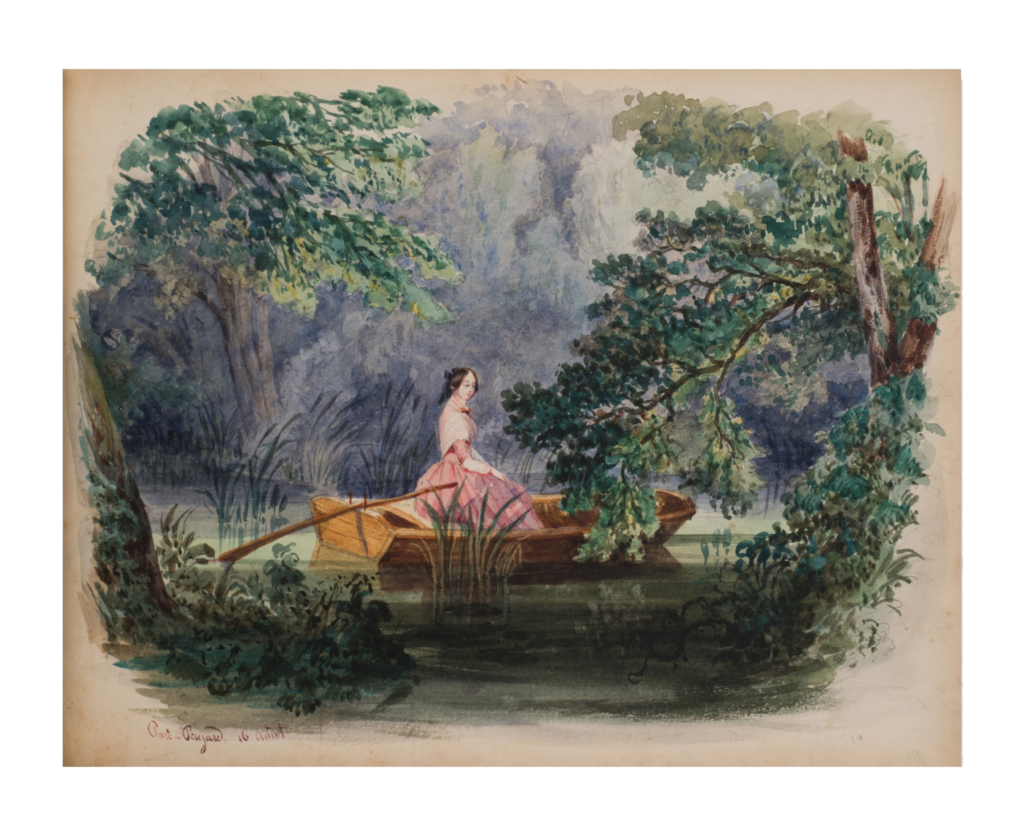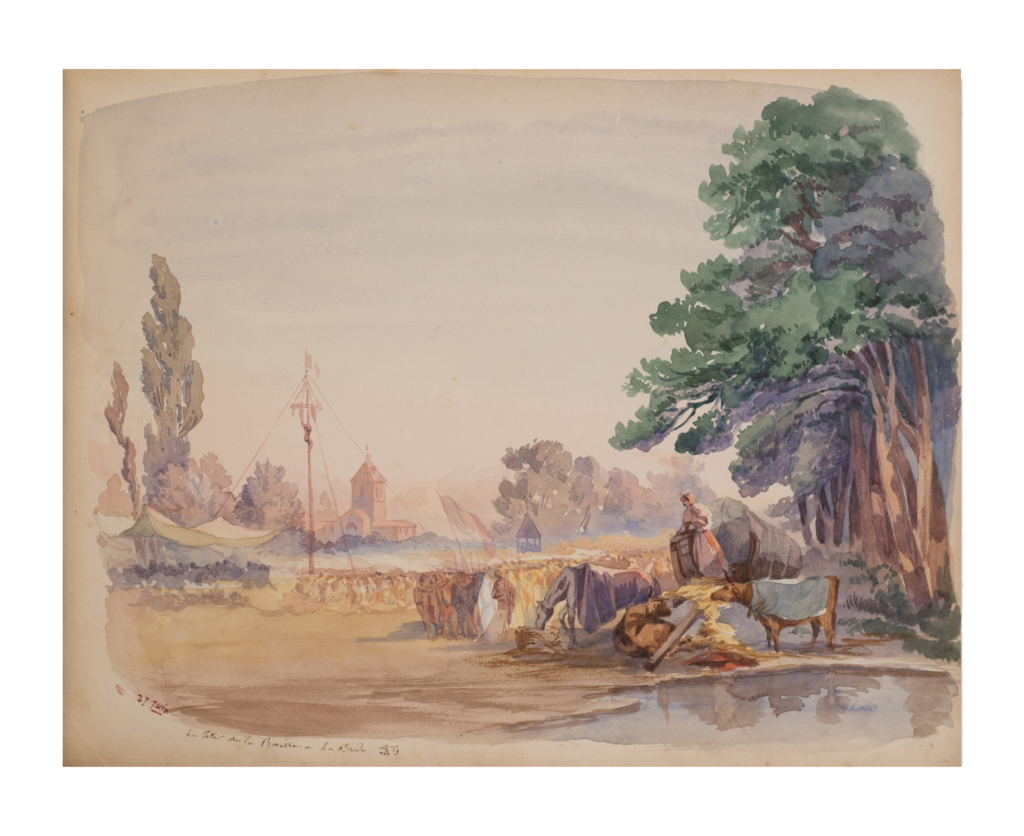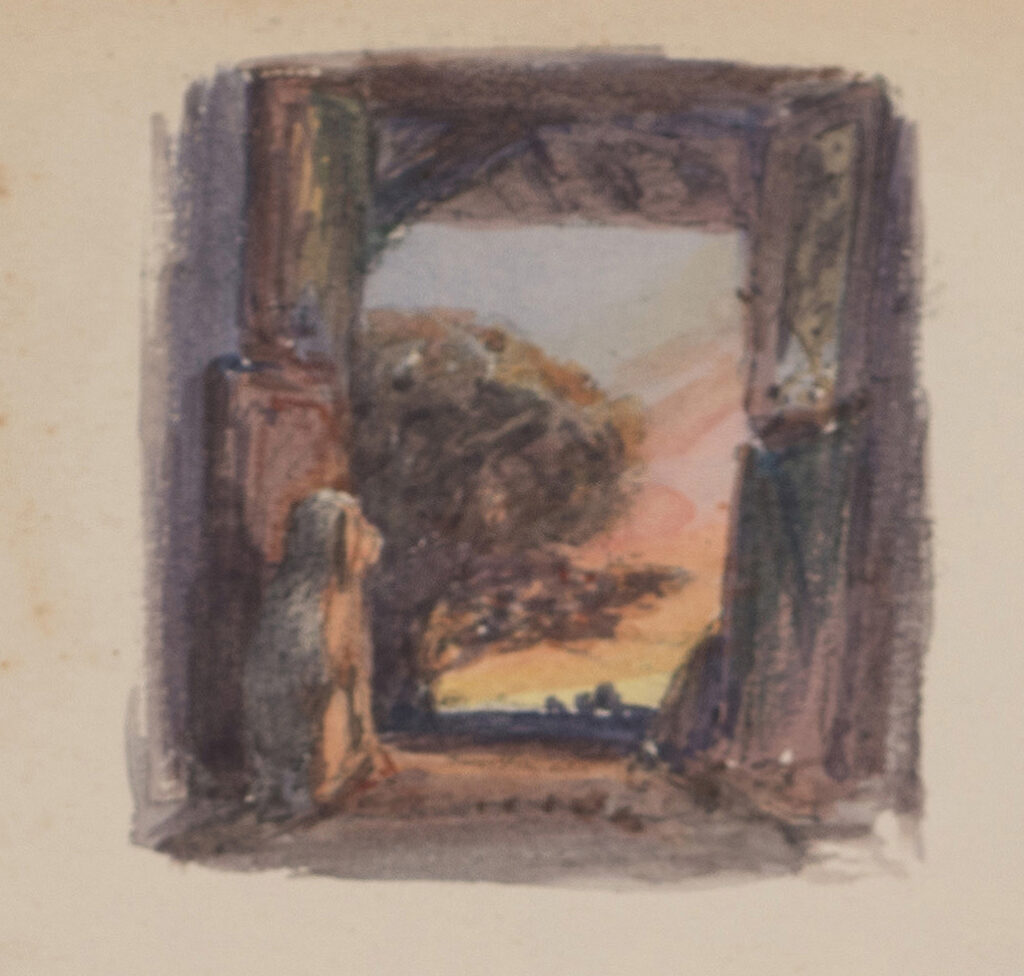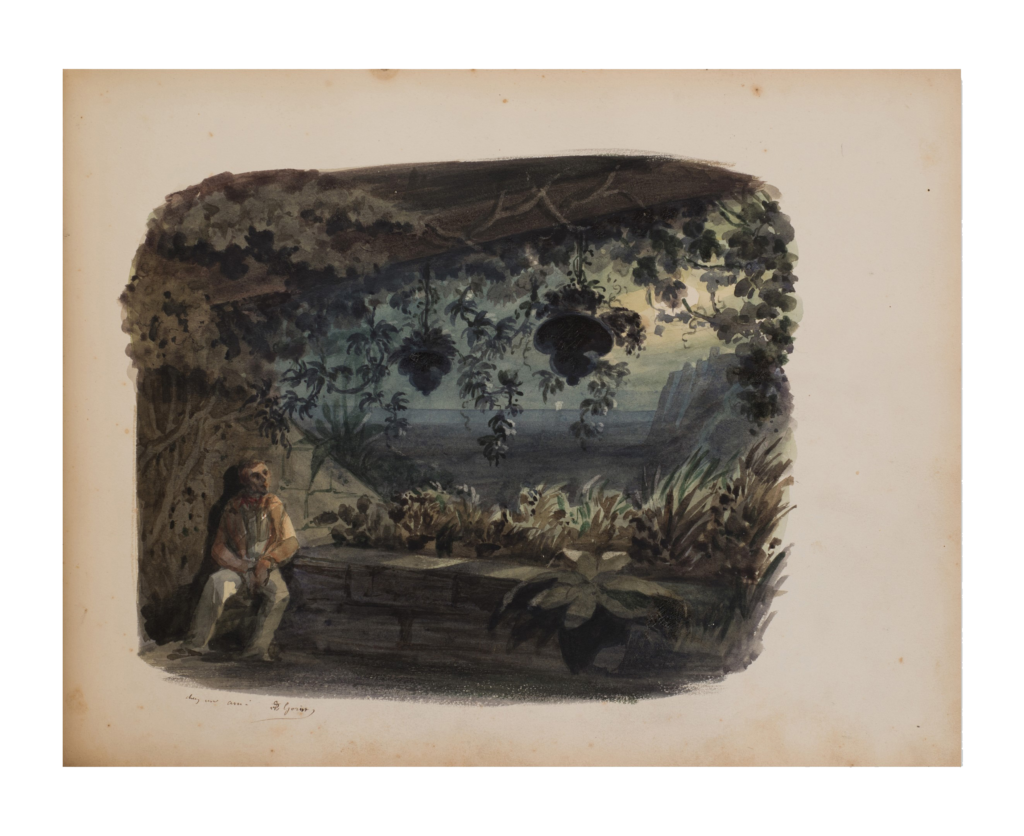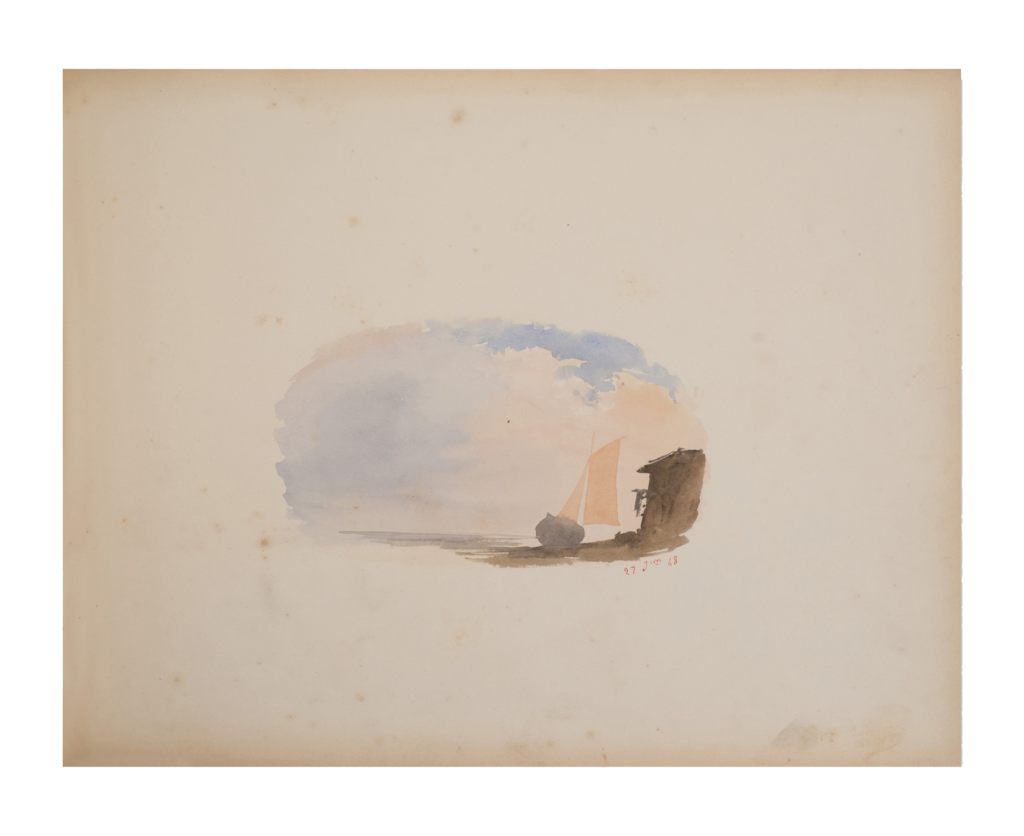From the Gironde estuary to the Dolmens of Saint-Nazaire, Stanislas Gorin’s Finest Days.
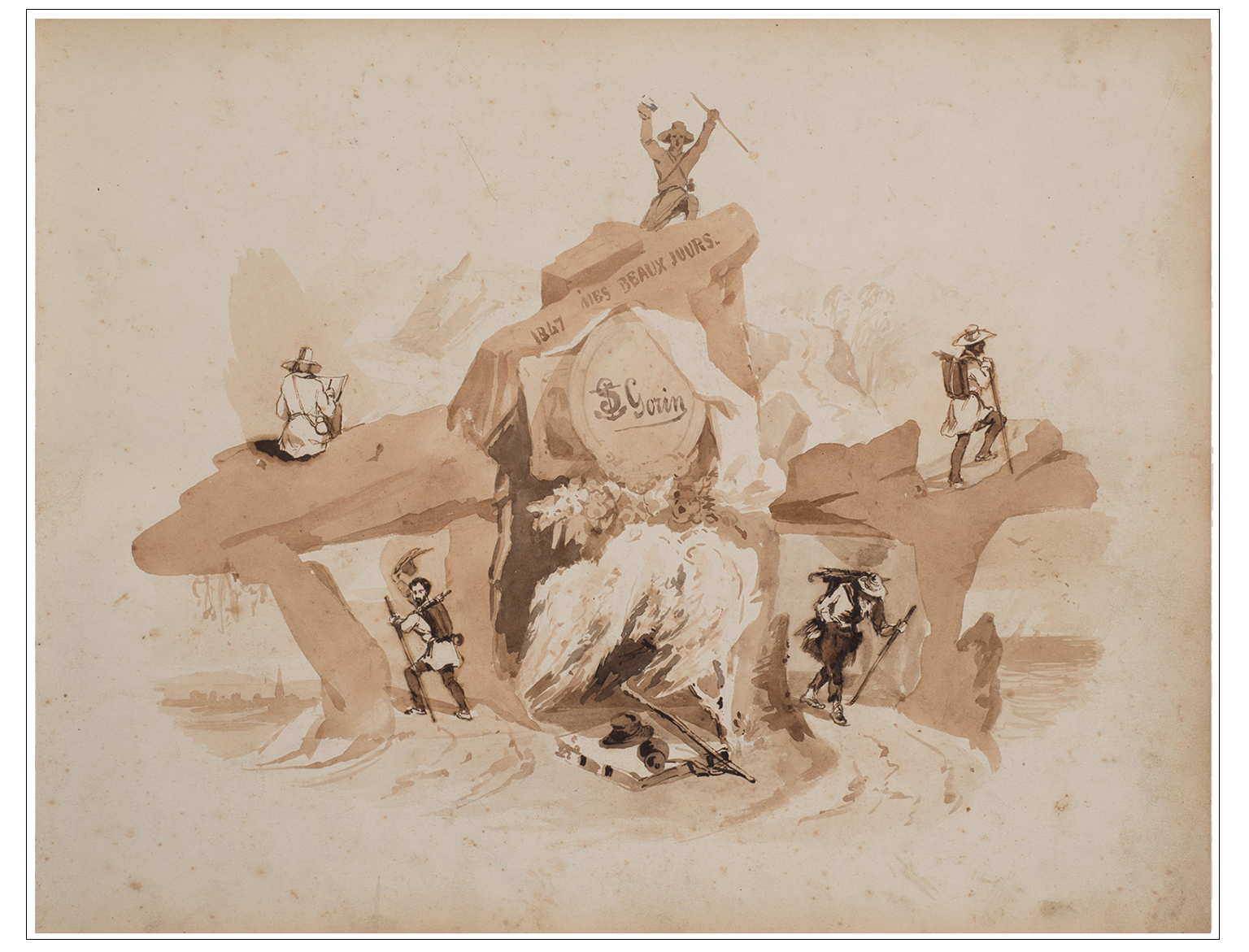
Stanislas Gorin
Argent-sur-Sauldre, 1824 – La Brède, 1874
“Mes Beaux Jours” (My Golden Days), an album of 53 drawings
Ink and watercolor.
Notebook : 260 x 340 mm ; sheet : 253 x 325 mm.
An integral part of the artist’s daily life, this notebook containing 53 drawings, invites us into the author’s private space, tracing his peregrinations – mainly, but not only – around Bordeaux. Little known today, the painter and lithographer Stanislas Gorin was a pupil of Antoine Désiré Héroult in Bordeaux and of Eugène Isabey – two masters from whom he gained a taste for romantic watercolours and picturesque views. Gorin exhibited at the Paris Salon several times between 1846 and 1861. Elected to the Bordeaux Academy in 1850, he had some success at various exhibitions in the city. From the beginning of his career, his close childhood friends, the Montesquieu family, supported Gorin who produced views of the Château de La Brède as well as hunting scenes with hounds for them. According to Édouard Féret’s 1889 text, Gorin made a long trip to Spain, perhaps with Baron de Montesquieu, during which he gathered material to write Richesses artistiques des musées et des grandes galeries de l’Espagne (The Artistic Wealth of Spanish Museums and Major Galleries), a work that is no longer referenced today. Later, a long stay in England allowed him to meet several renowned watercolourists. Gorin spent the last part of his life at La Brède[1].
The Bordeaux Museum owns a large oil canvas depicting L’Embarquement d’Abd-El-Kader à Bordeaux (The Embarkation of Abd-El-Kader to Bordeaux) and its preparatory sketch, both dated 1850, as well as an album of watercolours comparable to ours. The Musée Condé in Chantilly also owns watercolours made during Gorin’s trip to Spain. Though he is little known today, Gorin was Odilon Redon’s first master in Bordeaux and is mentioned systematically in biographies on the Symbolist artist. Redon, master of pastel and charcoal, expressed his gratitude for his great master many times –¬ a teacher who was both rigorous and encouraging. Redon’s testimony compensates for the lack of biographical information on Gorin by providing commentary on the sensitive temperament of this talented watercolourist: “His first word – I will always remember it – was to advise me that I am my own person and must never allow myself to draw a single pencil line without my sensitivity and my reason being present,” Redon informs us[2]. Gorin encouraged Redon to look at works by the 19th century artists Millet, Corot, Delacroix and Moreau in exhibitions held at the Société des Amis des Arts in Bordeaux. “My teacher spoke to me in front of them like the poet he was, and my fervour grew. I owe many of my first inceptive thoughts to my liberal education, the best without doubt, the freshest, the most decisive…[3] ” Naturally, Redon’s early works were particularly inspired by Gorin. The Louvre owns a watercolour from 1857 copied by the young student from a model by his master, as evidenced by the inscription. The album’s humorous frontispiece bears the title, Mes Beaux Jours, with the artist’s signature and the date of 1847 (p.4). It is still early in Gorin’s career and he represents himself on the first page as a travelling artist, rucksack on his back, following a rocky path and stopping to draw; waving with his hat and finally, triumphantly reaching the summits. We follow Gorin through the twists and turns of his travels, but also through his thoughts – journeys materialized in dazzling watercolours, grey washes or drawings hatched in pen and brown ink that suggest an almost Dutch inspiration. Gorin drew many views from the Dordogne to Brittany – often from nature – such as studies of boats on the Dordogne and the Garonne, the view of the Bec d’Ambès in the Gironde estuary (p.24), nearby towns such as Lormont (p.20) and Blaye (p.26 and 32) or more distant destinations like Angers (p.96), Saint-Cloud (p.98) and Clisson (p.94). He often drew La Brède, the Montesquieu family’s village, where he spent a good part of his life (p.16, 18, 52). In this album, Gorin also included a sketch of a religious scene, Lamentation au pied de la croix (Lamentation at the foot of the cross p.12); fanciful and imaginary studies, including La Rêverie (The Daydream p.22); romantic images, such as a couple settling on a boat (p.46) or a young woman in a boat in the middle of a bed of reeds (p.56); a few village scenes – for example, leaving mass in Gujan on the Arcachon bassin (p.54)¬ – or la fete de la Rosière in La Brède (p.68); the fishermen’s huts in the Arcachon bassin (p.76) and their houses made of boats erected on the ground and consolidated with wooden planks (p.78).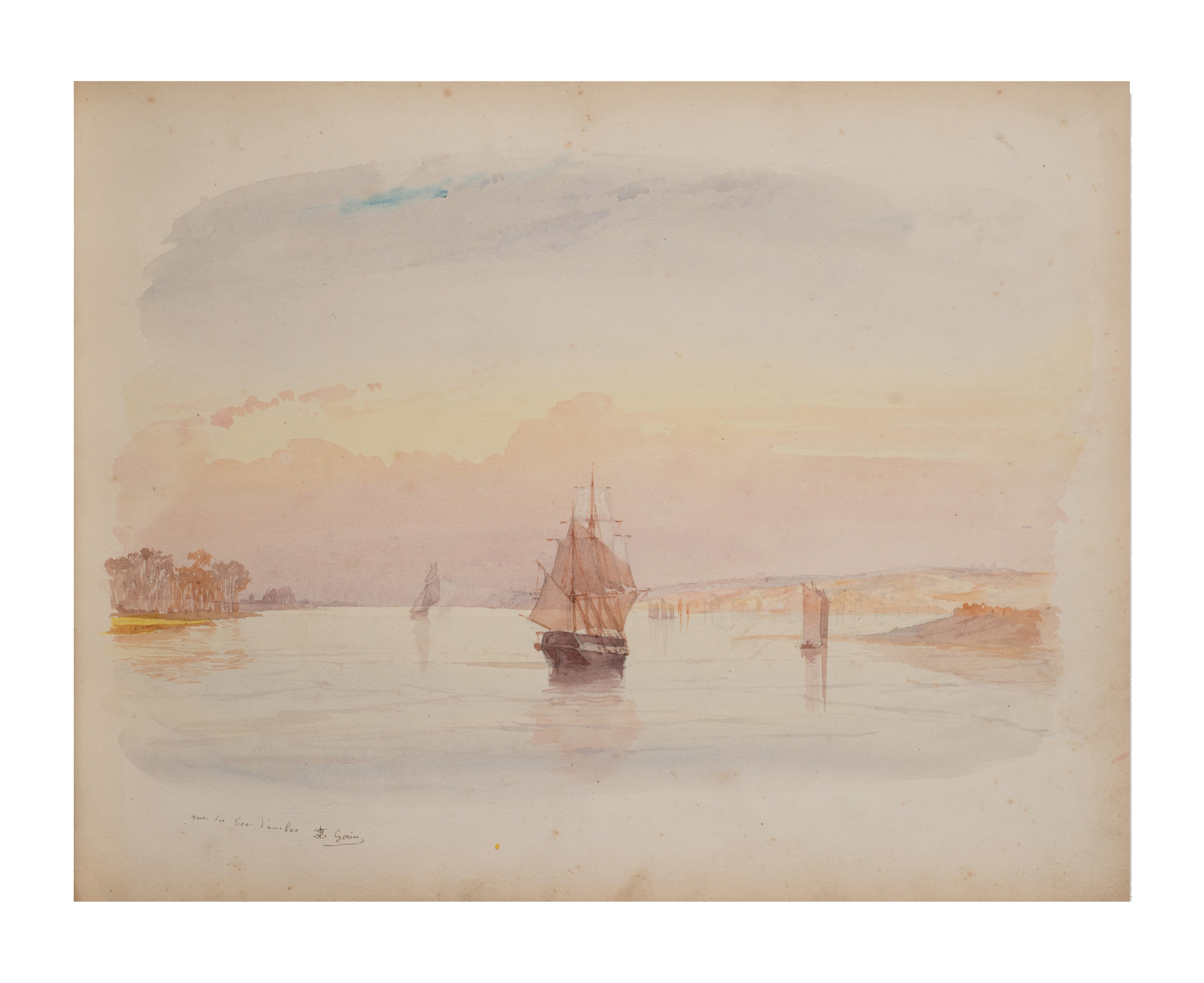

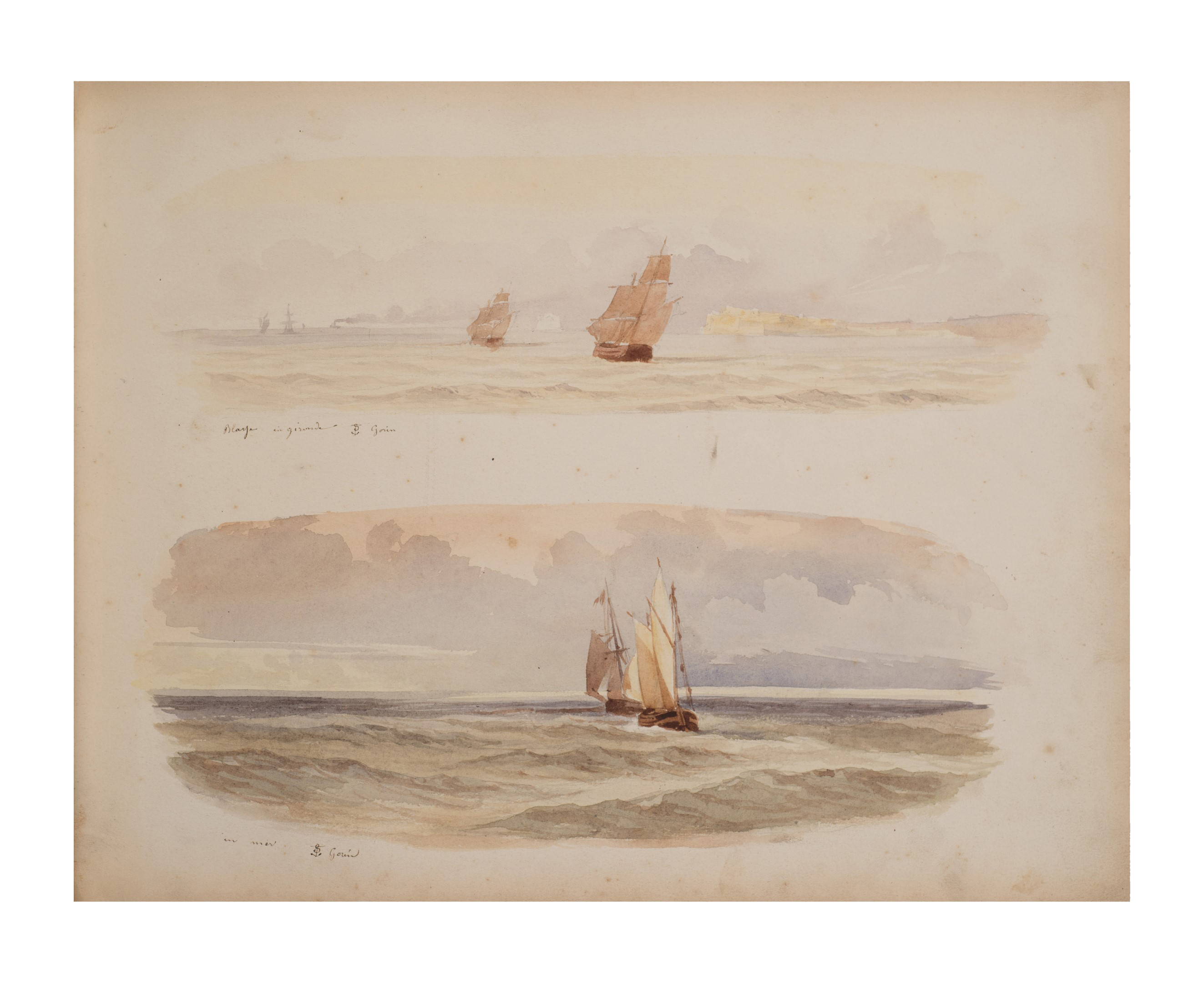
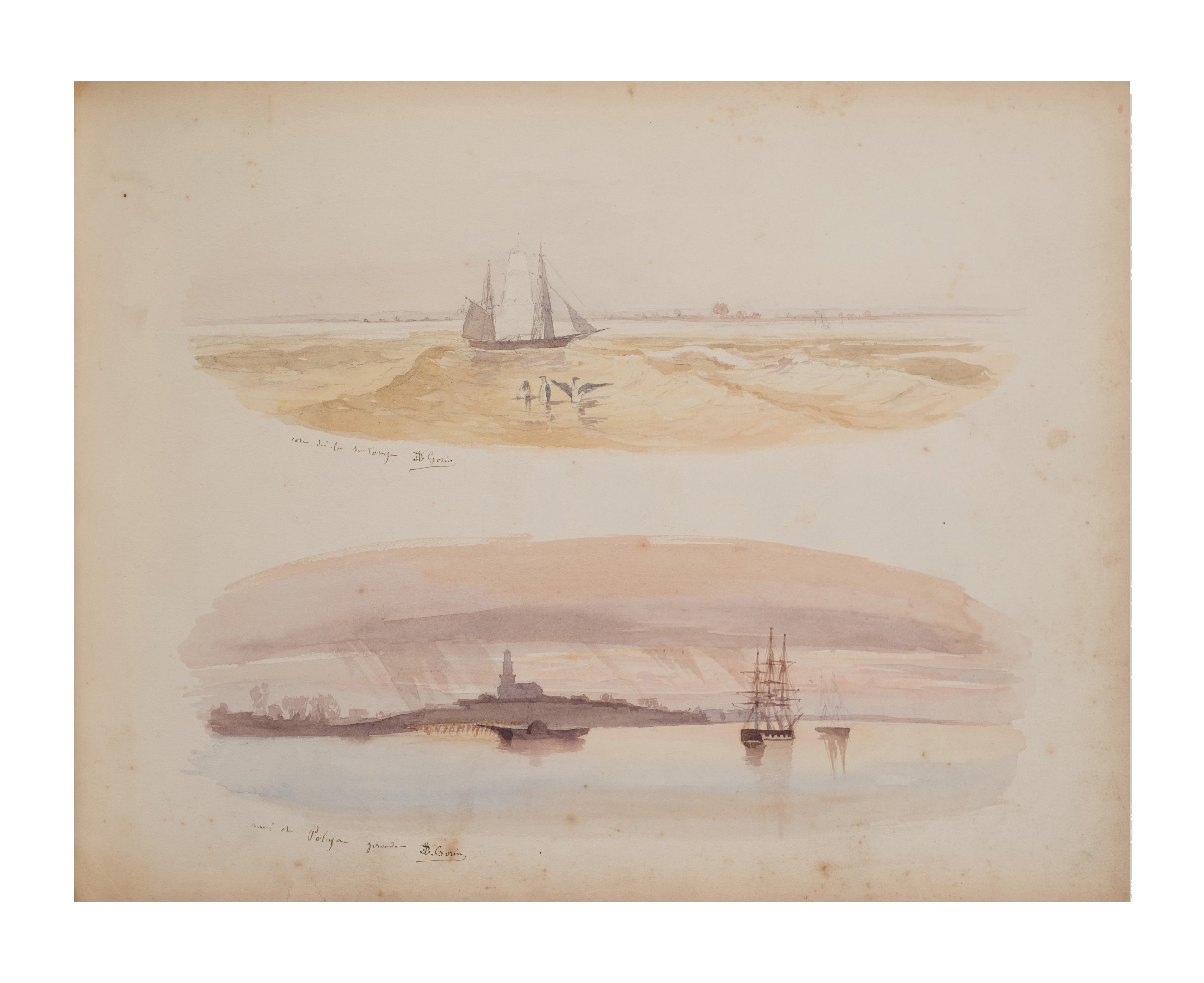
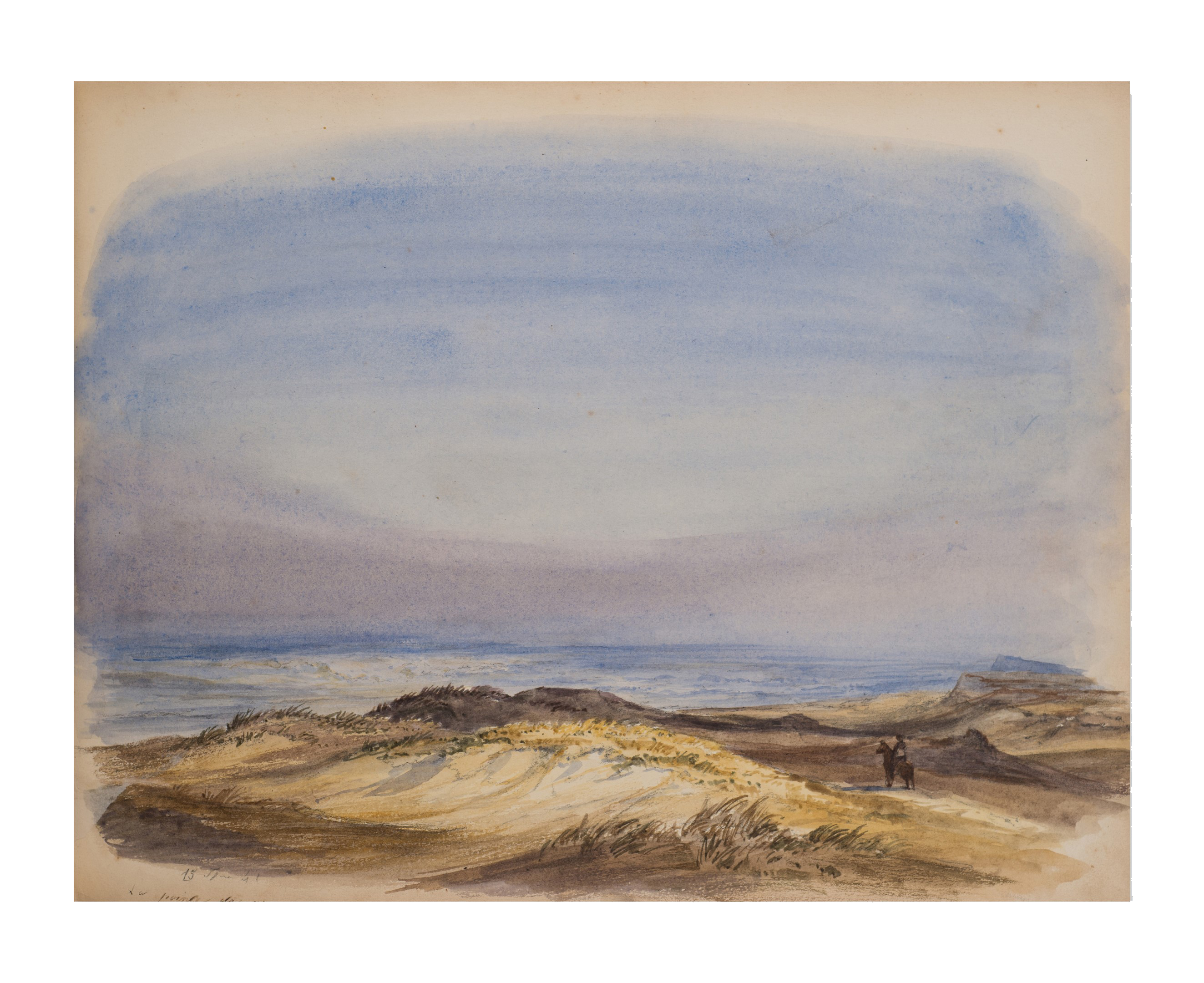
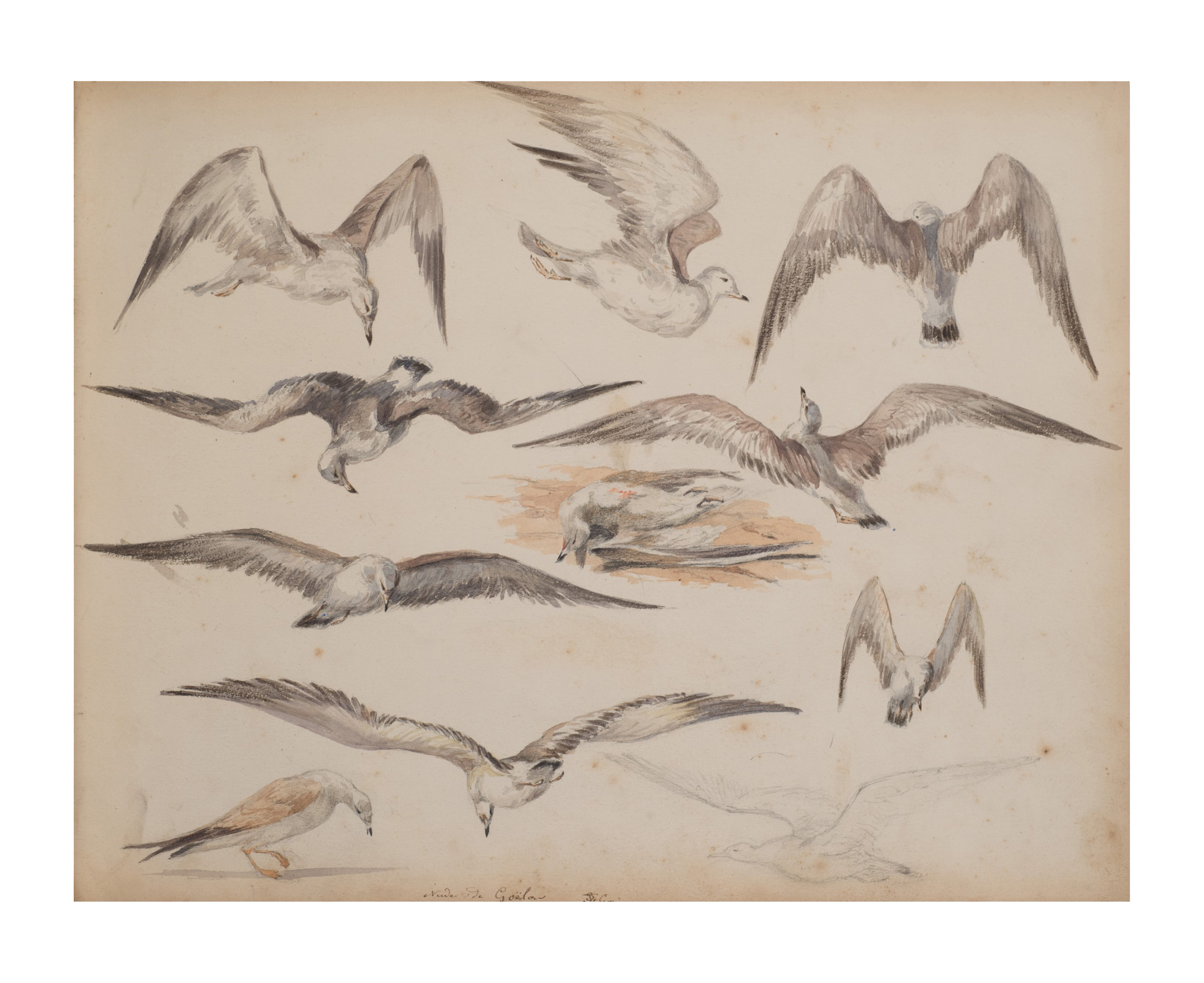

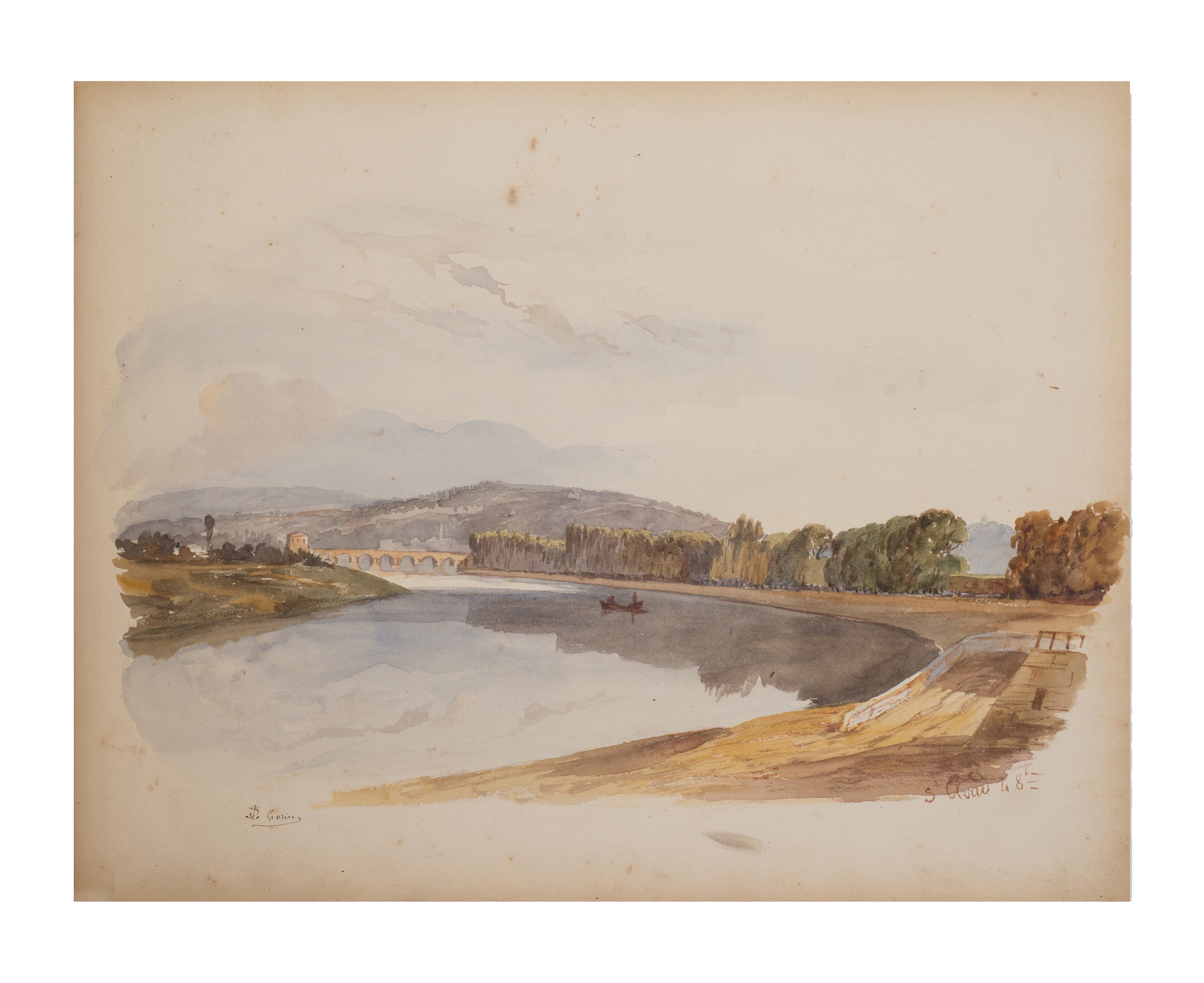
[1] Édouard Féret, Personnalités et notables girondins de l’Antiquité à la fin du XIXe siècle (Girondin Personalities and Notable People from Antiquity to the End of the 19th Century), Bordeaux, 1889, p. 287. [2] Dirk Van Gelder, Rodolphe Bresdin and Odilon Redon. Réflexions sur les rapports d’amitié entre le maître et l’élève (Reflections on a Friendship between Teacher and Student), 1966, p. 265. [3] Ibid, p.266. [4] Ibid., p. 265.
